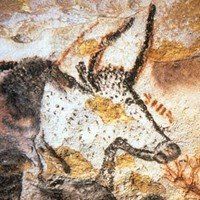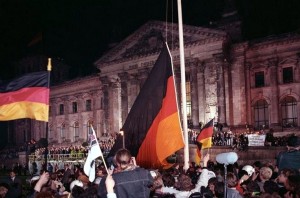Good morning, Whitewater.
We’ll have morning showers with a high of fifty-five.
On this day in 1990, after decades of division and Communist oppression, East Germany is reunified with the West:
The Volkskammer, the Parliament of East Germany, passed a resolution on 23 August 1990 seeking the accession (Beitritt) of the German Democratic Republic to the Federal Republic of Germany as allowed by article 23 of the West German Basic Law, effective 3 October 1990.[7][8] In the wake of that resolution, the “German reunification treaty”,[9][10][11] commonly known in German as “Einigungsvertrag” (Unification Treaty) or “Wiedervereinigungsvertrag” (Reunification Treaty), that had been negotiated between the two German states since 2 July 1990, was signed on 31 August 1990. This Treaty, officially titled Vertrag zwischen der Bundesrepublik Deutschland und der Deutschen Demokratischen Republik über die Herstellung der Einheit Deutschlands (Treaty between the Federal Republic of Germany and the German Democratic Republic on the Establishment of German Unity), was approved by large majorities in the legislative chambers of both countries on 20 September 1990[12] (442–47 in the West German Bundestag and 299–80 in the East German Volkskammer). The amendments to the Federal Republic’s Basic Law that were foreseen in the Unification Treaty or necessary for its implementation were adopted by the Federal Statute of 23 September 1990. Under article 45 of the Treaty,[13] it entered into force in international Law on 29 September 1990, upon the exchange of notices regarding the completion of the respective internal constitutional requirements for the adoption of the treaty in both East Germany and West Germany.
With that last step, and in accordance with article 1 of the Treaty, Germany was officially reunited at 00:00 CET on 3 October 1990. East Germany joined the Federal Republic as the five Länder (states) of Brandenburg, Mecklenburg-Vorpommern, Saxony, Saxony-Anhalt and Thuringia. These states had been the five original states of East Germany, but had been abolished in 1952 in favour of a centralised system. As part of the 18 May treaty, the five East German states had been reconstituted on 23 August. At the same time, East and West Berlin reunited into one city, which became a city-state along the lines of the existing city-states of Bremen and Hamburg. In an emotional ceremony, at the stroke of midnight on 3 October 1990, the black-red-gold flag of West Germany—now the flag of a reunited Germany—was raised above the Brandenburg Gate marking the moment of German reunification.
Google-a-Day asks about art:

Many of the cave paintings at Lascaux show the animals with heads in profile, but with horns facing forward. This is an example of what convention of representation?

